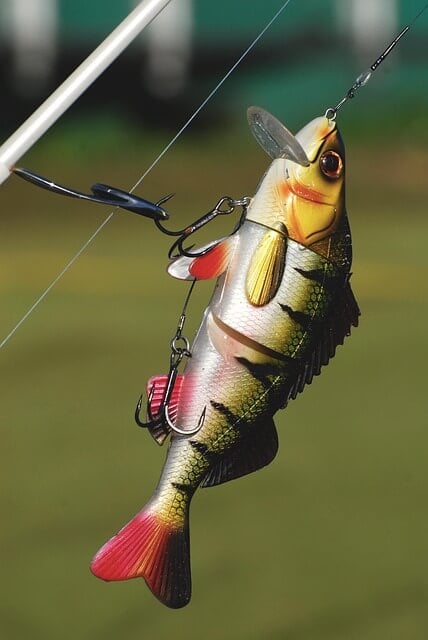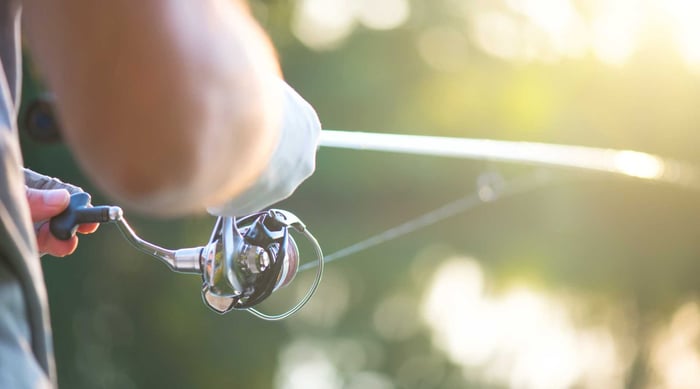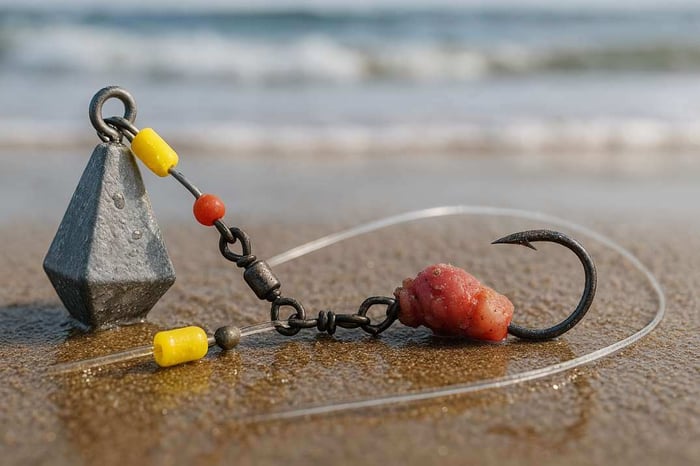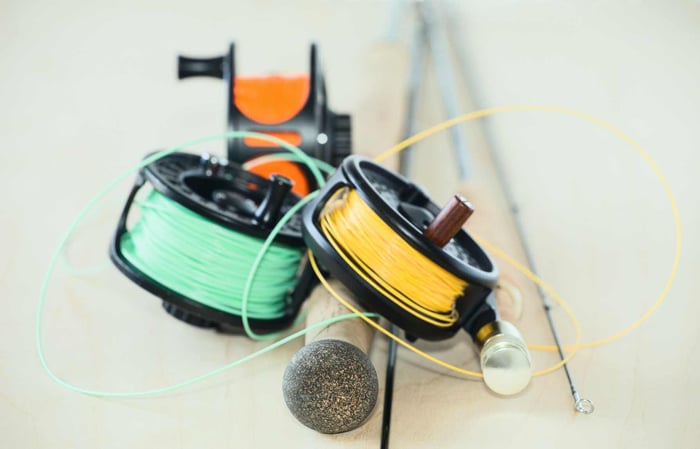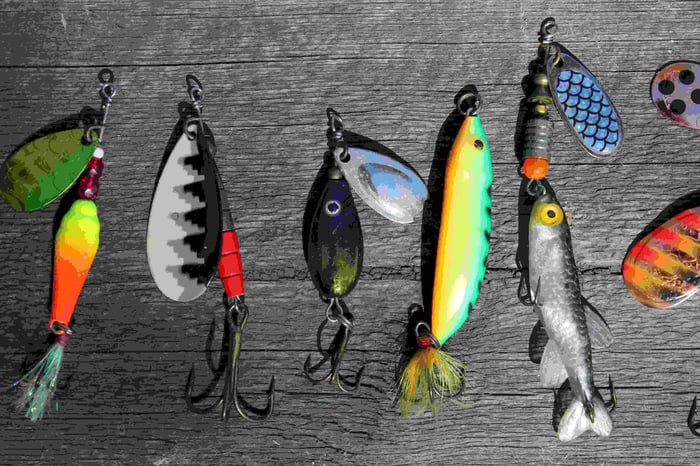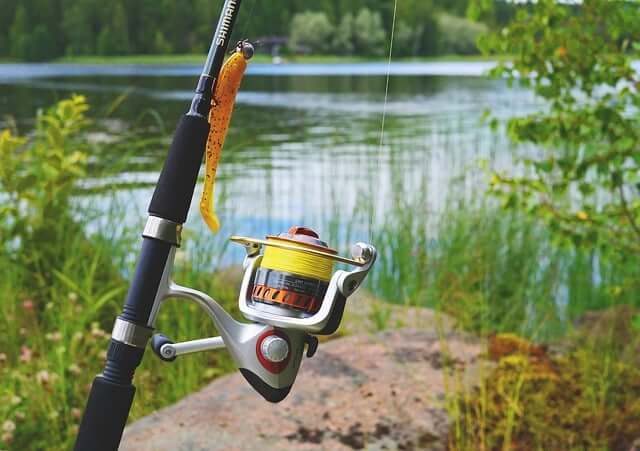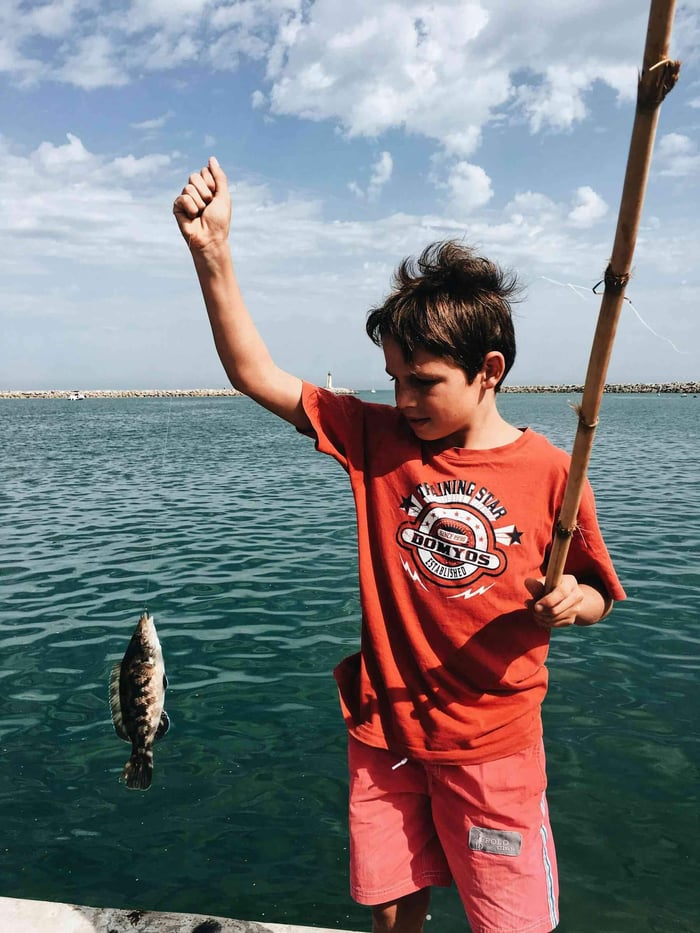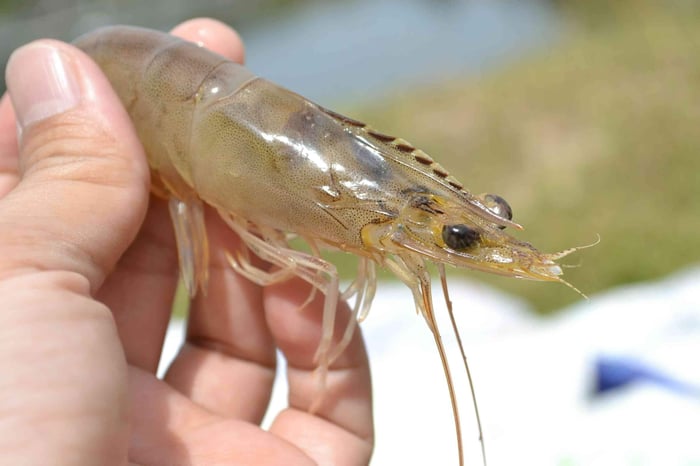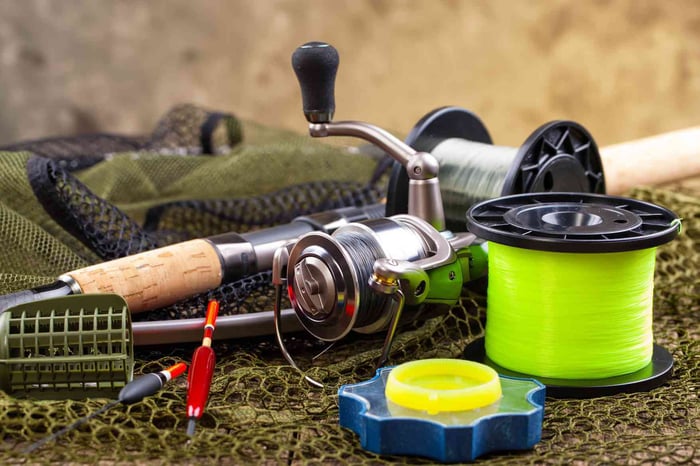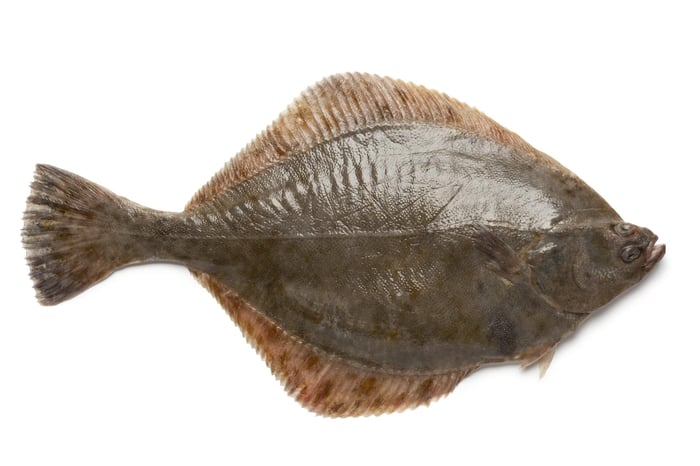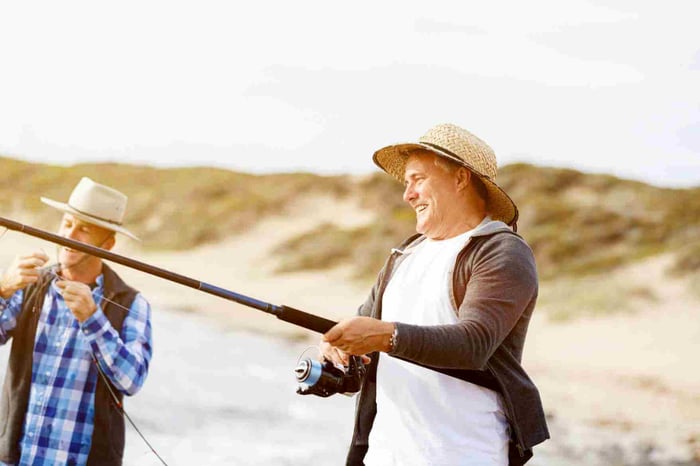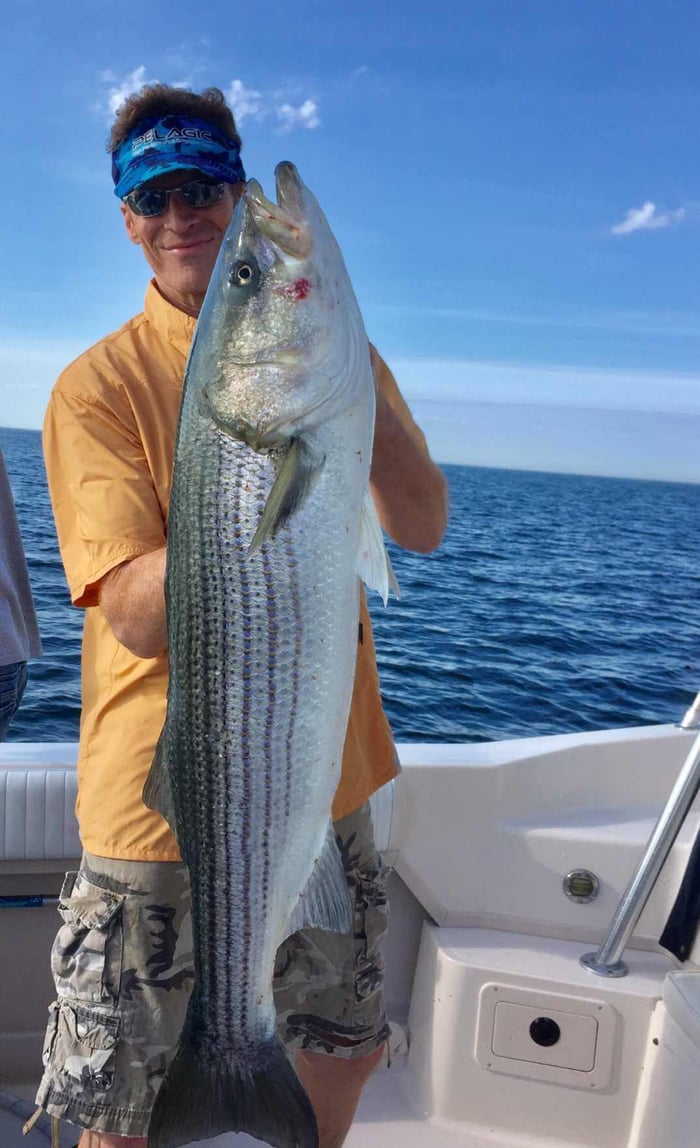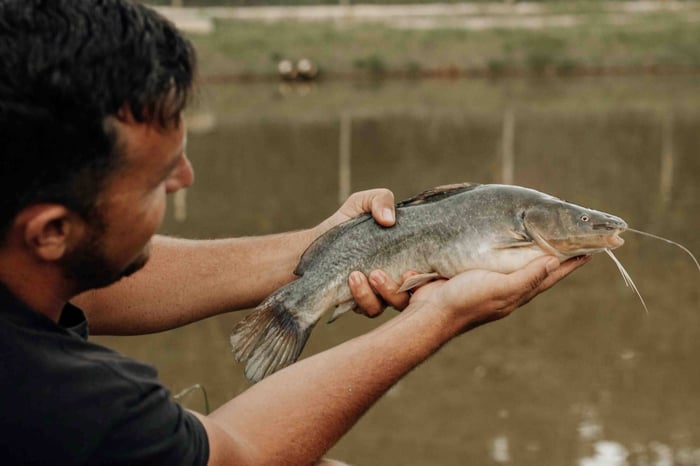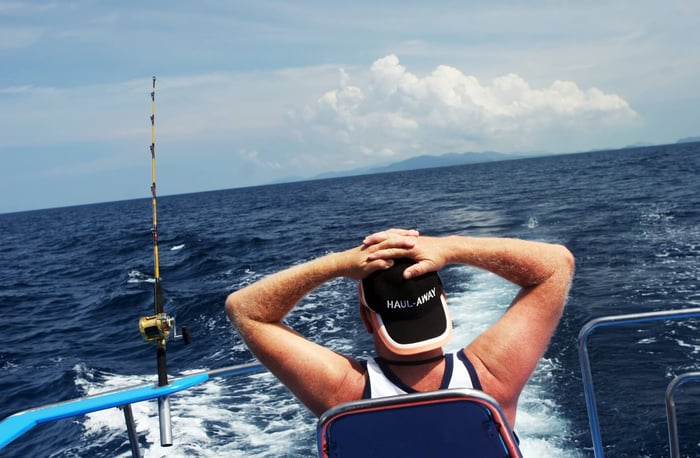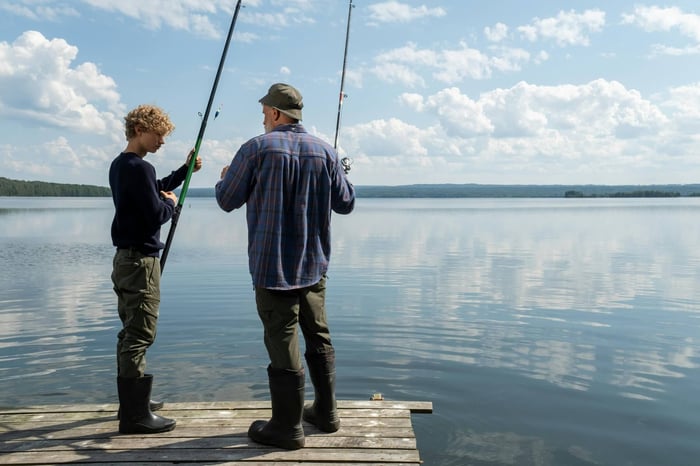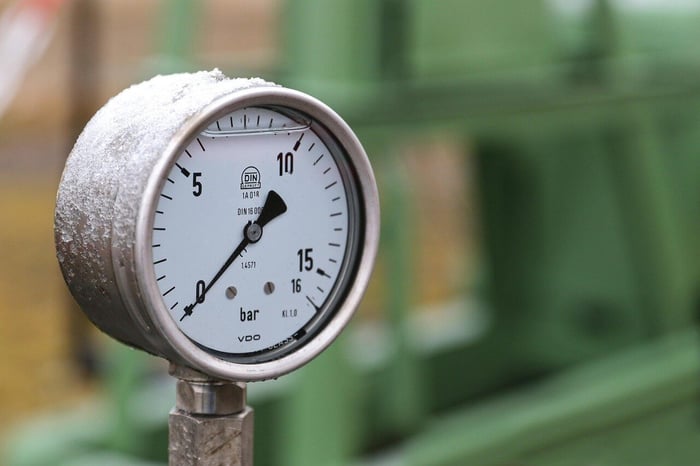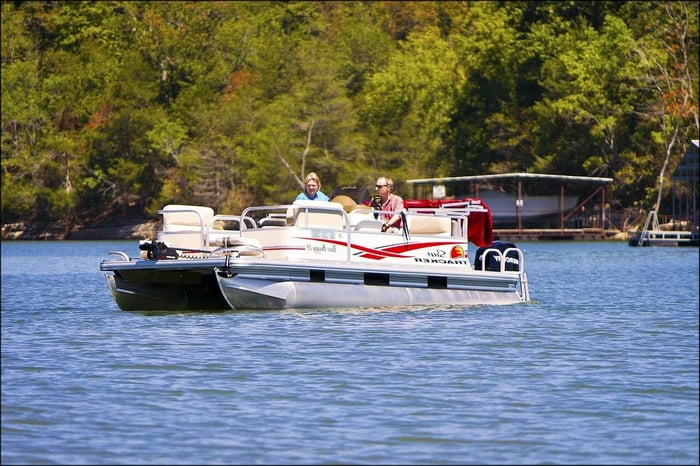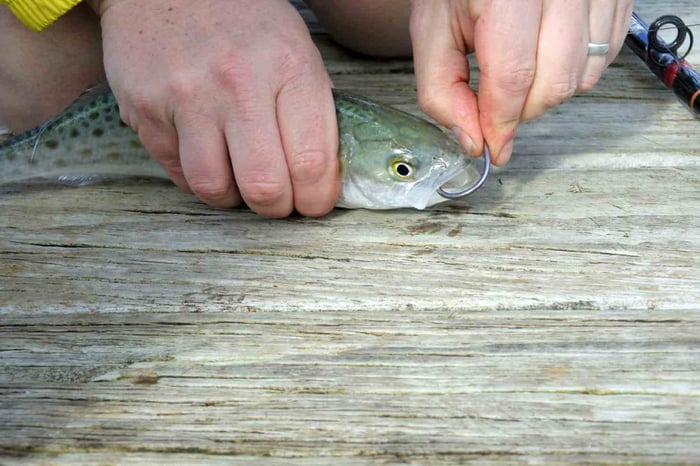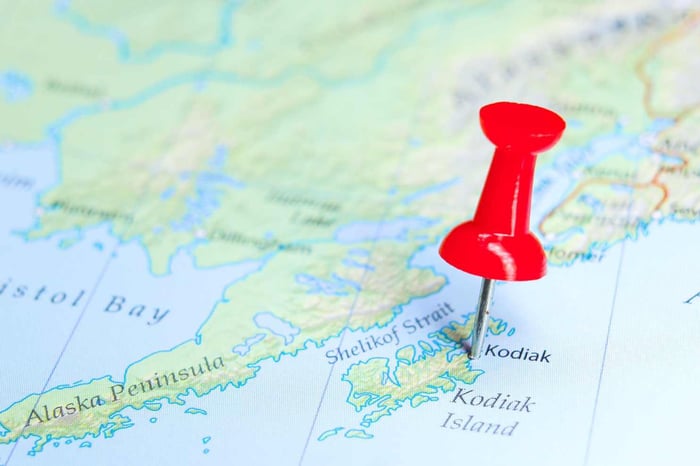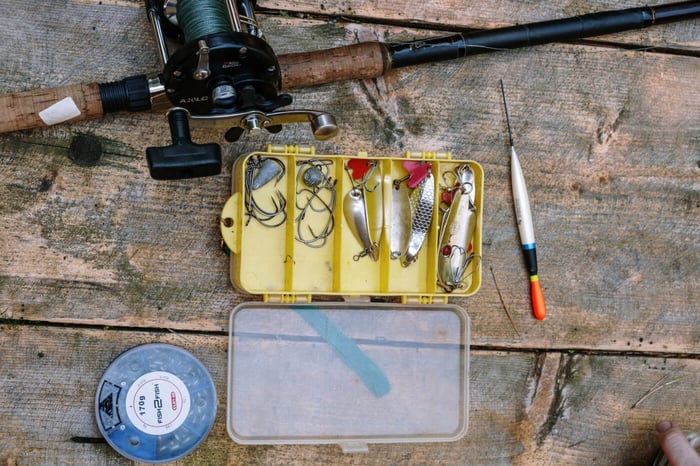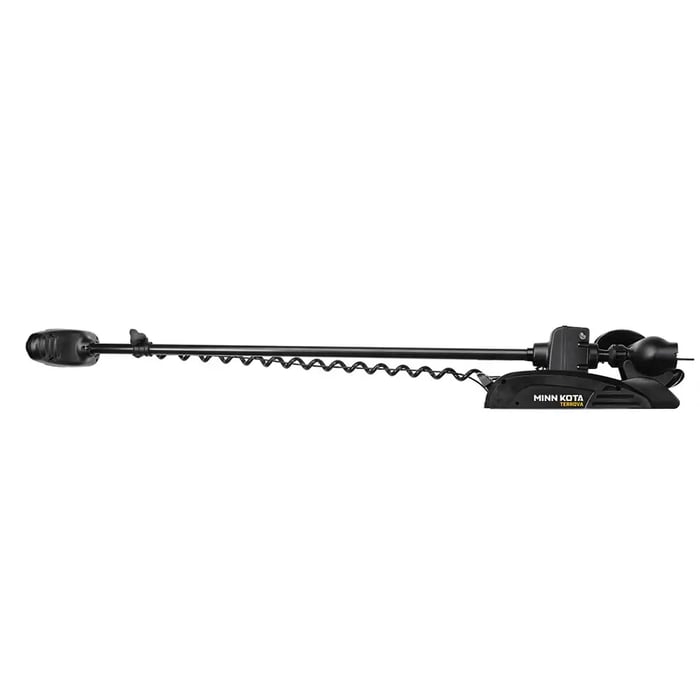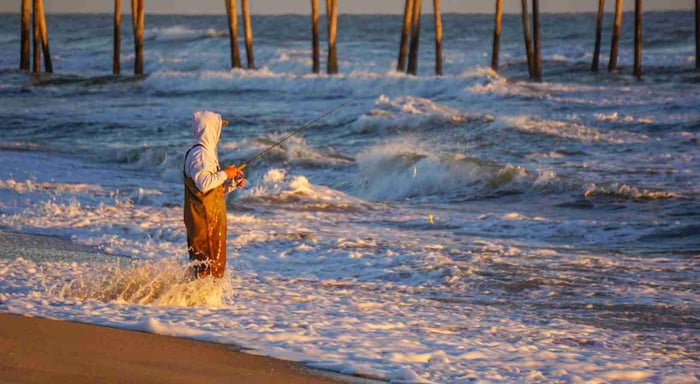Table of Contents
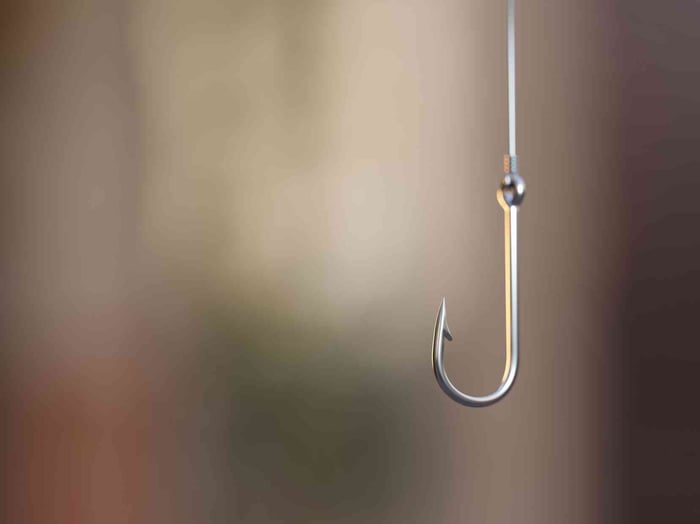 Choosing the right fishing hook is very important. And honestly, I don't think newbies understand that enough. I mean, it's just a hook after all, right?
Choosing the right fishing hook is very important. And honestly, I don't think newbies understand that enough. I mean, it's just a hook after all, right?
Or so you thought.
But hooks literally help decide whether the bait looks natural underwater. Or if the fish will bite it. Or if the hook even sets when they do.
A poor choice will cost you fish despite having a nice rod, reel, or line. They will ALL come to waste! I just know we wouldn't want that to happen.
However, the fact is that hook sizes aren't always standardized. Same thing with reel sizes.
The number will be reversed, so the bigger number actually indicates a smaller hook. Then, you have a shift at size 1 to another paradigm.
After that, you have 1/0, 2/0, 3/0, etc., each being progressively bigger. It is confusing at first glance, especially if you are holding onto a rack of hooks in your hand at the store.
In this article, we'll try to address that same confusion. You’ll see a chart that lays out the different sizes, how they measure up, and what species they fit best.
From panfish to marlin, and from worms to soft plastics, we’ll walk through how to match hook size with both bait and fish.
By the end, you’ll have a clear picture (hopefully) of which hook belongs on your line and why it matters.
Take A Look At Fishing Hook Sizes
Below is a fishing hook size chart. We've compiled this from multiple sources. Hopefully, the chart provides a good idea of what the sizes are comparable to and what they can be used for.
Be aware that there are different styles of hooks, so jig hooks, worm hooks, treble hooks, and fly hooks are different. Yes, even if they have the same number.
Nevertheless, this chart serves as a reference for most freshwater and saltwater fishing queries.
Take a look at the chart below.
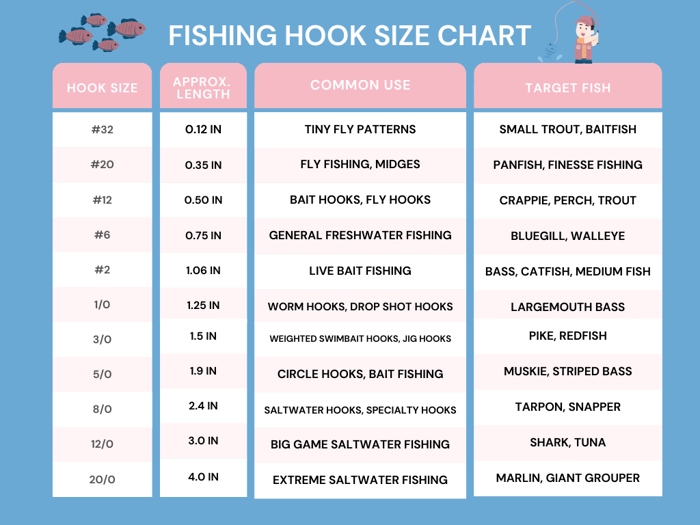
This chart illustrates the evolution from small hooks to big hooks.
Small hooks are ideal for fly fishing. While medium hooks encompass the majority of bass fishing and freshwater fishing adventures. And big hooks are for saltwater fishing hook sizes and are made to endure heavy wire gauge, multiple points, and toothy predators.
Obviously, different scenarios in fishing require different types of hooks as well.
Circle hooks are popular for catch and release, while J hooks and octopus hooks are great for live bait.
Treble hooks are featured on most fishing lures.
Saltwater jigging uses specialty hooks such as siwash hooks or assist hooks.
Each type of hook comes with the corresponding hook size to complement the bait and the type of fish.
Having hooks sorted in your tackle box allows you to easily select the correct hook while on a fishing trip.
A sharp hook is important. That's why most anglers carry a hook file to sharpen the point.
Having the proper combination of size, style, and point is important. That way, you are set to catch fish on a broad variety of waters. No hassle at all!
Parts of a Fishing Hook
All hooks used in fishing have a few main parts, and they all play their part in making it work.
1. Point
Towards the sharp end of it, you will find the point, which is what goes into the fish's mouth.
2. Barb
Most hooks also have a barb situated behind the point that helps with keeping the fish from slipping off, but some fishermen use barbless fishing hooks for catch-and-release fishing.
3. Shank
The vertical portion of the hook is the shank. It may be medium, long, or short and influences the manner in which the lure or bait lies in the water.
Straight shanks exist, but other ones utilize a curved shank design on specialty hooks.
4. Eye
The eye, where the fishing line is attached, is found at the top of the shank.
Different types of hooks use a ringed eye, upturned eye, or even a straight eye, depending on the fishing type.
5. Bend
The bend is the curve that the hook follows down to the gap.
6. Gap
The gap is the space between the shank and the point where it is open.
Hook gap is also among the most important features because it needs to be proportionate to the size of the bait and fish mouth.
Small hooks have small gaps that can accommodate small fish like bluegill or crappie.
Big hooks have big gaps to catch soft plastic baits or live bait for big fish.
When you fit these pieces together, you have a simple but effective look.
Choosing the right hook requires not only a correct size match but also a shape fit of each piece to the species of quarry and the fishing conditions.
Fishing Hook Sizes Work Like This
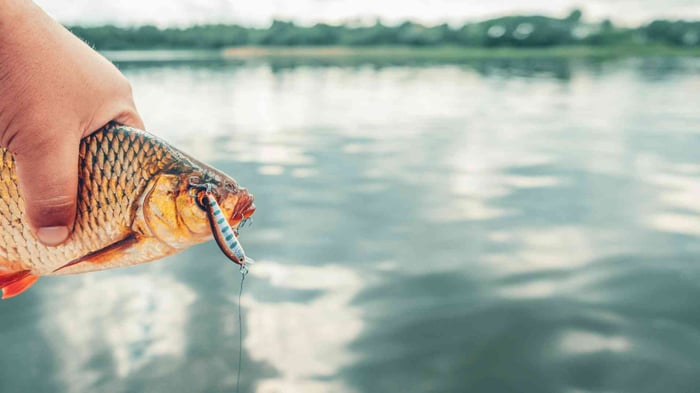
Fishing hook sizes appear kinda "weird" when you first lay eyes on them.
The system goes two ways.
One side has numbers which begin small at size 32 and progress towards size 1. The lower the number, the larger the hook.
The other side has a variety of sizes, expressed as 1/0, 2/0, and so on. With aughts, the bigger the number, the larger the hook. A 10/0 is huge relative to a 1/0.
It's big due to the fact that hooks are intended for literally everything. From the tiny panfish to the behemoth shark. And more!
Size 32 fly hook is practically a pin and is utilized to create small fly patterns for delicate trout.
Size 20/0 saltwater hook will accommodate toothy fish such as marlin or mammoth tuna. Most anglers inhabit somewhere in between with medium-sized hooks covering bass fishing, catfish, and general freshwater.
Hook sizes aren't quite the same across manufacturers.
A size 6 from one may be slightly smaller or bigger than a size 6 from another. That's why a lot of anglers have to compare by eye or line them up in the tackle box before a fishing trip.
You develop an eye for what's right for the quarry over time. Sometimes, it takes time and more experience at sea!
One of the simpler ways of visualizing hook sizes is to relate them to everyday objects.
A size 12 is roughly the size of a fingernail. A size 6 approaches the size of a dime. A 2/0 can be the width of a quarter.
Anything larger than 10/0 begins to feel bulky in the hand and is obviously designed for saltwater fishing. Having thoughts of hooks this way, hopefully, makes the chart less theoretical and more functional. It's easier to picture them this way.
What Hook Size to Target Certain Fish
All fish have unique mouth shapes, and that really determines the hook size more than anything.
A fishing hook that slips neatly into the mouth of the fish will set more solidly and hold better.
The more your hook gap is either too wide or too narrow, the more fish you will lose.
That is where a hook size chart will come in handy because it provides a range that corresponds with common species. Hopefully, we've provided this for you.
• Panfish
For panfish species that are smaller in size, like bluegill or crappie, fishers usually turn to smaller hooks between #12 and #8.
The smaller hooks accommodate a small fish's mouth without being suffocating.
Fly hooks of the same size are also utilized when fishers are dealing with small patterns of flies.
The aim is to maintain the hook point sharp and have the presentation light so that fragile bites are not really overwhelmed.
• Trout
Trout may demand many sizes of hooks depending on the method.
Dry flies and nymphs in fly fishing typically demand smaller hooks. Yes, as low as #16.
Worm or synthetic lure bait fishing is best done with hooks in the range of #10 to #6.
Trout possess softer mouths, and a light wire hook with little pressure will often be sufficient to set fish cleanly.
• Bass
Bass fishing is where medium hooks enter the picture.
Most anglers use worm hooks, drop shot hooks, and swimbait hooks with weights for sizes #2 to 4/0.
The appropriate hook will depend on whether you are using simple fishing equipment or casting large soft plastic lures.
Bass have larger mouths than trout or panfish, so the hook gap must clear the bait and still have enough room to hook fish safely.
• Catfish
Catfish are most often baited with circle hooks of sizes 1/0 to 6/0.
Circle hooks are ideal for catch-and-release fishing because they tend to catch in the corner of the mouth of fish with very little effort.
The hook's design also accommodates live bait fishing and cut bait. Honestly, both are popular options for catfish.
• Redfish, snook, and striped bass.
Saltwater inshore fishing provides another group of species, including redfish, snook, and striped bass.
Saltwater hooks in sizes 2/0 through 6/0 are the typical choice for fishermen. That really just depends on what the bait is.
These hooks strike a balance between strength and presentation, as inshore fish can be finicky in shallow water.
• Tuna, marlin, and shark
For offshore fishing applications, extremely large hooks are needed.
Tuna, marlin, and shark necessitate saltwater fishing hook sizes ranging from 8/0 through 20/0.
These are hooks with heavy gauge wire, a durable hook bend, and razor sharp tip built to pierce through the jaw of big fish.
Offshore fishers also employ specialty hooks such as assist hooks and siwash hooks when using heavy jigging equipment.
What Hook Size to Bait
The bait placed on the hook is as important as the target species when deciding on the proper hook. The hook must fit the bait naturally, grasp it firmly, and have the point exposed to catch fish.
If the point is covered by the bait or covers the hook gap, you will miss strikes. And we don't want that, right?
Small baits such as worms, crickets, or minnows must be paired with small hooks.
Bait hooks from #12 to #8 will suffice to provide a worm or a cricket without squishing it.
Small live bait can naturally swim on one hook, so the more, the merrier in this instance.
Fly fishing using an insect pattern is the same concept, and smaller hooks are used to replicate the size of the bug.
Large Live Baits
Large live bait, like mullet, shad, or big minnows, demand larger hooks.
Octopus hooks or circle hooks from size 2/0 to 6/0 are standard for freshwater live bait fishing and saltwater fishing.
These hooks have sufficient hook gap to hold the bait and still have the pointed end exposed for hooking fish.
To avoid bending, in toothy fish, saltwater fishers may use heavier gauge wire hooks.
Soft Plastics
Soft plastics require a different method.
Worm hooks, jig hooks, and weighted swimbait hooks are all positioned at the same width as the bait.
The gap must be enough such that when compressed bait reaches the mouth of the fish, the hook point will find its way in.
It's particularly crucial with bass fishing, where soft plastic swimbaits and worms are employed a great deal.
Natural vs Artificial Baits
Natural baits typically require barbed hooks to retain the bait, whereas lures typically are pre-tied on treble hooks or single hook rigs.
Treble hooks contain several points of hooking, but can be replaced with barbless fishing hooks if you want to catch and release fish.
Honest take? There's no way artificial lures are going to be very effective unless they're kept so sharp that so many anglers carry a hook file around in their tackle box and keep them razor-sharp.
What Fishing Technique For Your Hook Size
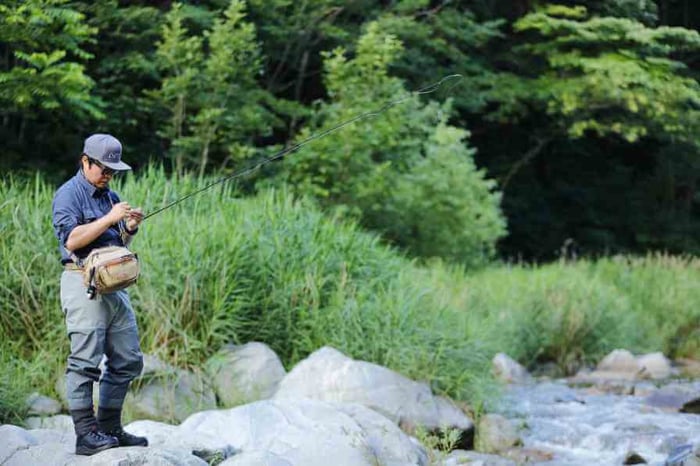
Various fishing methods require varying sizes of hooks. The same species of fish can even require varying hooks based on the way you target it.
That's the reason skilled anglers carry different types of hooks in their tackle box.
Having the correct hook for the correct method results in more catches and fewer missed opportunities.
Fly Fishing
Fly fishing is one of the most perfect (if not, the MOST perfect) moments of utilizing small hooks. Fly hooks can go down to size 32 to accommodate tiny midge patterns.
Hooks so sharp they practically cut the water are made for imitating insects so small they hardly skitter the surface of the water.
Trout and other small fish will often rise to these fly patterns. And truth be told, smaller hooks are the only means of matching them.
Barbless hooks are also found here because catch-and-release fishing is an important part of fly fishing culture. That's just how it works.
Ice Fishing
Ice fishing often employs tiny jigs baited or rigged with soft plastic.
Standard sizes are about #12 to #6. The smaller hooks maintain the presentation's tightness without sacrificing too much hook gap to hook fish through the ice.
Single-point jig hooks are prevalent in this environment, as finesse trumps brute power.
Drop Shotting
Drop shotting is another technique.
Drop shot hooks between #2 and 1/0 are a common size for anglers to use. These thin-wire hooks have enough sting to hook fish with hardly any pressure and allow the bait to remain natural-looking.
Clear water bass fishing tends to require this type of setup.
Texas Rig
When conditions change and you need power, the Texas rig is used. The method is centered on worm hooks of size 2/0 to 4/0.
The offset or straight shank worm hook makes it possible to rig soft plastic baits weedless, a critical aspect of fishing in heavy cover.
Getting hook sizes to match the thickness in baits is particularly crucial here so that the hook point will penetrate cleanly into the mouth of the fish.
Saltwater Trolling
Saltwater trolling introduces the biggest hooks of this category. Fishermen pursuing large fish far out at sea frequently use saltwater hooks ranging in size from 6/0 to 12/0.
Circle hooks, siwash hooks, and other heavy hook types are the norm here.
The wire gauge is heavy, the bend of the hook is strong, and the points are extremely sharp to contend with toothy fish at high speed.
These are the big hooks designed for saltwater fishing situations where you cannot afford to lose a fish.
Each method has its own requirements, and hook sizes are adjusted to accommodate them.
Keeping hooks in order and knowing which type suits your method puts you in the right position regardless of where you fish.
From Other Anglers
I've read a few posts online and found pretty helpful tips.
One of the top tips that anglers post online is to replace treble hooks with single hooks wherever possible.
Trebles catch on everything, including your own hand, and catch-and-release becomes a messy affair. One good, sharp hook is usually sufficient to catch fish without causing further damage.
Many anglers also hammer the barb down using pliers or a hook file.
It may seem insignificant, but it makes unhooking easier and provides better chances for released fish.
The hook still keeps its grip if you maintain constant pressure, and you will spend less time fighting at the net. Less stress. More happy times at the water.
Matching hook size to bait is another recurring theme.
Many anglers say they have landed big fish on surprisingly small hooks. The trick is balance: let the bait look natural and give the hook enough gap to catch in the fish’s mouth.
Another habit is keeping hooks organized by type and size.
It feels tedious, but when the bite is hot, fumbling for the right hook is the worst.
And lastly, with circle hooks, don't yank. Allow the fish to flip with the bait and then just reel.
